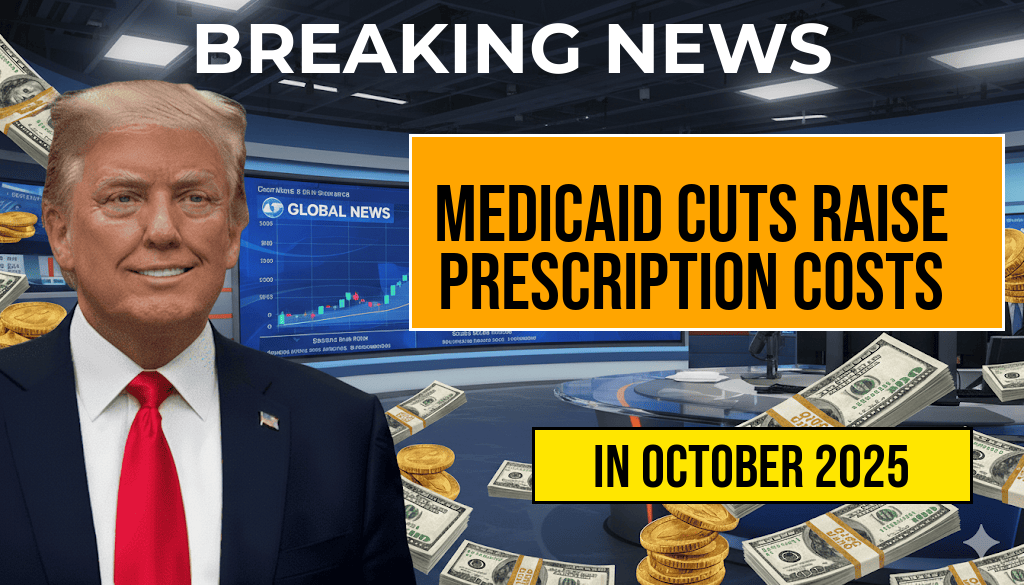Washington Post Reports $1 Trillion Medicaid Cuts Drive Up Costs for $300 Prescriptions
Recent disclosures from The Washington Post reveal a significant shift in Medicaid policy that has led to sweeping budget reductions totaling approximately $1 trillion over the past decade. These cuts, driven by federal and state-level cost-containment strategies, have resulted in a ripple effect that pushes the price of commonly prescribed medications—such as a $300 drug—far beyond previous levels. As healthcare providers and patients grapple with these increased expenses, concerns grow over the long-term implications for access and affordability. Experts warn that these austerity measures may undermine the very objectives of Medicaid, which aims to provide affordable healthcare for vulnerable populations, by forcing patients to pay more out-of-pocket or forego essential treatments altogether.
The Scope of Medicaid Budget Reductions
Medicaid, the joint federal and state program that covers nearly 80 million Americans, has faced persistent pressure to control costs amid rising healthcare expenses. According to internal analyses obtained by The Washington Post, a combination of policy shifts, tightened eligibility criteria, and reimbursement adjustments have collectively reduced federal contributions by roughly $1 trillion since 2013. These reductions are part of broader efforts to curb national healthcare spending, but they have unintended consequences on drug pricing and patient access.
| Year | Total Budget Cuts | Key Policy Changes |
|---|---|---|
| 2013 | $50 billion | Implementation of stricter eligibility rules |
| 2016 | $150 billion | Reimbursement rate adjustments for providers |
| 2020 | $300 billion | Reduction in pharmacy reimbursements |
| 2023 | $500 billion | Further tightening of provider payments and drug formulary restrictions |
| Total | $1 trillion |
Impact on Prescription Drug Prices
One of the most immediate effects of these budget cuts has been the escalation of prescription drug costs for Medicaid beneficiaries. The Post reports that medications once priced around $300 now often carry higher out-of-pocket costs or are less accessible due to formulary restrictions and reduced reimbursement rates for pharmacies. For example, a recent case involved a patient prescribed a specialty drug for multiple sclerosis, which saw its copay skyrocket from $50 to nearly $200 after formulary changes and coverage limitations were enacted.
Pharmacists and healthcare providers have noted that the shift toward cost-saving measures has resulted in fewer options for patients, increased delays in medication access, and, in some cases, complete medication non-adherence. When patients cannot afford their prescriptions, they are more likely to experience disease progression or complications, leading to higher overall healthcare costs that negate the intended savings from the cuts.
Stakeholder Perspectives
Patients and Advocacy Groups
- Patients report increased financial burdens, especially for high-cost specialty drugs.
- Advocacy organizations warn that these policies disproportionately affect low-income communities and those with chronic illnesses.
Healthcare Providers and Pharmacists
- Providers express concern over limited formulary options, which hinder personalized treatment plans.
- Pharmacists face logistical challenges in navigating the complex reimbursement landscape, often resulting in delayed medication dispensing.
Policymakers and Analysts
- Some policymakers argue that these cuts are necessary to sustain the Medicaid program amid rising costs elsewhere in healthcare.
- Health economists warn that short-term savings could lead to higher costs down the line due to untreated or poorly managed illnesses.
Broader Implications for Healthcare Spending
The current trajectory raises questions about the long-term sustainability of Medicaid under continued austerity. Experts point out that the increased expenses faced by patients and providers may lead to higher emergency room visits and hospitalizations, ultimately driving up overall healthcare expenditures. Additionally, the burden on state budgets is likely to grow as uninsured or underinsured individuals seek costly emergency care without access to preventive medications.
For more details on Medicaid policy and healthcare costs, readers can refer to Wikipedia’s entry on Medicaid and recent analyses from Forbes’ coverage of healthcare spending.
Frequently Asked Questions
What is the main issue highlighted in the Washington Post article?
The article discusses $1 Trillion Medicaid cuts that are leading to increased costs for prescription medications, with some prescriptions now costing up to $300.
How are Medicaid cuts affecting prescription drug prices?
The Medicaid cuts are causing a rise in prescription drug costs, forcing patients to pay more out-of-pocket, sometimes as much as $300 for certain medications.
Why are Medicaid cuts being implemented, and what are their implications?
These $1 Trillion Medicaid cuts are part of broader efforts to reduce government spending, but they are resulting in higher costs for consumers and potentially limiting access to essential medications.
Which medications are most affected by the increased costs due to Medicaid cuts?
While the article highlights a range of drugs, it emphasizes that costly prescriptions—up to $300—are particularly impacted, affecting treatments for chronic conditions and specialty drugs.
What potential solutions or responses are discussed to address the rising medication costs?
The article suggests that policymakers and healthcare providers need to consider alternative strategies to mitigate the impact of Medicaid cuts, such as expanding assistance programs or negotiating drug prices.

Leave a Reply